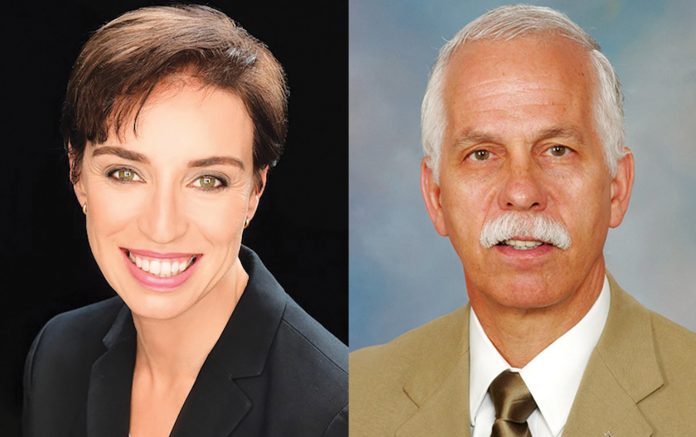By Emily Stone, MBBS, MMed, FRACP, and James Jett, MD
Posted: December 2017
Cannabis, a generic term for various products derived from the plant cannabis sativa, has a long history of both medicinal and recreational use. Current pressure for the regulation of cannabis use1 highlights the need for clinicians working in the areas of lung cancer and pulmonary medicine to better understand its origins, forms, modes of consumption, benefits, and risks.
Background
The term marijuana may be used interchangeably with the term cannabis, but marijuana generally refers to parts of the cannabis plant that have high levels of tetrahydrocannabinol (THC), whereas the term cannabis encompasses organic products, including cannabidiol (CBD) and other cannabinoids, marijuana, and hemp (cannabis plants that contain very low levels of THC).2 There are a number of cannabinoid derivatives, but the most familiar effects (euphoria and relaxation) are associated predominantly with THC. When consumed, cannabis is associated with several effects, some potentially appealing and some unsafe.
Various Forms, Origins, and Potency of Cannabis
Products derived from cannabis include buds (dried cannabis flowers), resin, and oil. Cannabis products can be smoked or inhaled, ingested, or absorbed topically. The onset of action of cannabis differs depending on the mode of intake: rapid effects can be seen with smoked or vaporized cannabis (within 30 seconds). The onset of psychotropic effects may be slower with ingestion (between 30 minutes and 2 hours after consumption).2 The potency of cannabis refers to the level of THC it contains. The level of THC has increased over recent years.3 The average THC level in cannabis in the United States increased from 4% in the mid-1990s to 12% by 2012. There has also been a rise in the production of sinsemilla, a high-potency strain of cannabis that is grown from clones, rather than from seeds.2
Cannabis and Lung Cancer
The evidence assessing the link between the smoking of cannabis and lung cancer is limited. The best evidence comes from the pooling of studies. Zhang et al. pooled data from 6 studies in 4 countries and found no convincing association between cannabis smoking and the incidence of lung cancer.4 Limitations of this analysis include potential bias from self-reporting for both cannabis and tobacco use, imputed values for missing data on education level and tobacco smoking, the unknown variations in cannabis dose related to differences between cannabis plants, differences in processing and inhalation techniques, and the small numbers of heavy cannabis smokers. Huang et al. reviewed pooled data from 6 studies (including the study by Zhang et al. and 2 of the studies in that review) and did not find an association between marijuana use and lung cancer.5 Limitations were similar to those in the other study.
Emerging Therapeutic Products
Medicinal use of cannabis (known as medical marijuana) has attracted headlines over the past few years. The use of medical marijuana has been approved in Canada, in Australia, in a number of other countries, and in more than half of the states in the US.1 The authors of antiemetic guidelines published by the American Society of Clinical Oncology in 2017 noted that FDA-approved oral cannabis derivatives may be useful for chemotherapy-related nausea and vomiting, but that the evidence is subject to methodologic limitations of the various relevant trials.6 Cannabis-derived products that have been approved for medical use include dronabinol capsules for chemotherapy- induced nausea and appetite stimulation in HIV-associated anorexia.7 Nabilone has also been approved by the FDA for chemotherapy-induced nausea. Nabiximol (under FDA review but approved elsewhere) is used in multiple sclerosis for analgesia and spasticity. There is moderate evidence that cannabis is beneficial for chronic pain and neuropathic pain.8 Medicinal cannabis, mainly CBD, has attracted attention for its possible anticonvulsant effect but, again, the evidence is not entirely clear.9
Summary
The legal status of cannabis products is changing rapidly, but in a piecemeal fashion. This fragmentary evolution is reflected in the evidence surrounding both its adverse and beneficial effects. Clinicians working in the field of lung cancer will benefit from a better understanding of both the science behind the effects of cannabis and the policy-related approaches. ✦
References
1. Hall W, Weier M. Assessing the public health impacts of legalizing recreational cannabis use in the USA. Clin Pharmacol Ther. 2015;97(6):607–615.
2. National Academies of Sciences, Engineering, and Medicine, Health and Medicine Division, Board on Population Health and Public Health Practice, Committee on the Health Effects of Marijuana: An Evidence Review and Research Agenda. The Health Effects of Cannabis and Cannabinoids: The Current State of Evidence and Recommendations for Research. Washington (DC): National Academies Press (US); 2017. http://www.ncbi.nlm.nih.gov/books/NBK423845/
3. ElSohly MA, Mehmedic Z, Foster S, Gon C, Chandra S, Church JC. Changes in cannabis potency over the last 2 decades (1995-2014): analysis of current data in the United States. Biol Psychiatry. 2016;79(7):613–619
4. Zhang LR, Morgenstern H, Greenland S, et al. Cannabis smoking and lung cancer risk: pooled analysis in the International Lung Cancer Consortium. Int J Cancer. 2015;136(4):894–903.
5. Huang YH, Zhang ZF, Tashkin DP, Feng B, Straif K, Hashibe M. An epidemiologic review of marijuana and cancer: an update. Cancer Epidemiol Biomarkers Prev. 2015;24(1):15–31.
6. Hesketh PJ, Kris MG, Basch E, et al. Antiemetics: American Society of Clinical Oncology clinical practice guideline update. J Clin Oncol. 2017; 35(28):3240-3261.
7. Jatoi A, Windschitl HE, Loprinzi CL, et al. Dronabinol versus megestrol acetate versus combination therapy for cancer-associated anorexia: a North Central Cancer Treatment Group study. J Clin Oncol. 2002;20(2):567–573.
8. Hill KP. Marijuana treatment for Chronic Pain and other Medical and Psychiatric Problems: A Clinical Review. JAMA. 2015;313(24):2474-2483.
9. Friedman D, Devinsky O. Cannabinoids in the treatment of epilepsy. N Engl J Med. 2015;373(11): 1048–1058.











